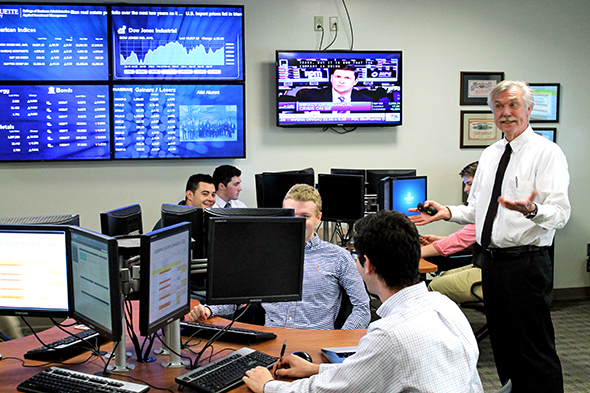By: Joel Kretz, AIM Student at
Marquette University
Disclosure: The AIM International Equity
Fund currently holds this position. This article was written by myself, and it expresses
my own opinions. I am not receiving compensation for it and I have no business
relationship with any company whose stock is mentioned in this article.
Summary
•
Unilever (UL) is a major global
consumer goods company. They are scheduled to report earnings on January 19,
2016.
•
On December 16, 2015, Unilever and Acumen announced an $800,000 investment in
East Africa to bring more affordable and cleaner cook stoves to smallholder
farmers and plantation workers.
•
Emerging market sentiment was down for 2015 and will likely remain stagnant in
2016, but is intact for the long run – a moderately positive sign for Unilever.
•
Analysts expected Unilever to have outgrown competitor Reckitt Benckiser for
2015 with underlying EPS growth expected to be 9% versus Reckitt Benckiser’s
expected 3%.
•
Credit Suisse upgraded Unilever last month to neutral from underperform while
Deutsche Bank boosted EPS growth estimates upwards, lending to increasingly
better prospects for the company.
•
Management has indicated that its ice cream brands are poised to benefit from
warmer temperatures in North America and the southern half of Europe resulting
from El Niño.
•
Unilever’s main competitor, Procter & Gamble, would be negatively impacted
should the Fed. continue hiking interest rates, pushing the dollar into closer
parity with the euro.
•
Pair traders are likely to move positions into Unilever and away from Procter
& Gamble and Reckitt Benckiser on the back of earnings and central bank
announcements.
Unilever (NYSE: UL) continues to be the company in the
best position to beat its American competitor, Procter & Gamble (PG). PG’s
foreign sales will likely continue to be negatively impacted by a rising USD
that typically follows Fed. rate hikes. Should the divergence in monetary
policy between the Fed. and ECB widen, the effect will be even more severe. UL
is poised to take market share away from PG as a result given the majority of
UL’s revenue already come from the United States (13.8%).
To
reiterate comments from my last update, UL’s cost of goods sold decreases with
falling European rates and PG’s cost of goods sold increases with rising
American rates. When considering the U.S. market, UL produces in Euros, Pounds,
and Yen, and sells in USDs. PG produces in USDs and Yen, and sells in USDs. Given
the two companies products are close substitutes, people will likely be willing
to switch shampoo brands, for example, if it is relatively cheaper to buy from
UL than PG.
What has the stock done lately?
The
stock has been trading more actively in recent days than over the past three
months (1.7 million shares per day vs. 1.3 million shares per day). This is
primarily on the back of data coming out of China in addition to the ongoing
commentary coming out central banks in Europe and the United States. About
13.0% of Unilever’s revenue is derived from China. Prior to the “China effect,”
it appeared that investors were awaiting further confidence in central bank
policy in January Fed. and ECB announcements given the stock had not moved much
since mid-October, trading in a range of ~$42.00-$44.00. The stock has taken a
hit since the China headlines from last week. Watch central bank moves in the
coming weeks as they will impact UL in the short-term. Once clarity comes out
of China and global central banks, the stock should begin rising again based on
continued solid fundamental performance and not be on “hold” by traders and
investors any longer.
Past Year Performance: UL’s price has increased 1.51% in value
and the stock’s total return is 4.5% over the past year. While the stock
continues to outperform both the S&P 500 and Russell Global ex US indexes,
it continues to be undervalued by Street estimates. The stock’s 52 week price
range is $39.08-$46.07. Back in August, Goldman Sachs downgraded UL to sell
from neutral and Unilever’s bond ratings were adjusted downward slightly by
Moody’s. The stock took off in September on strong macro numbers, upgrades on
the Street, ECB quantitative easing talks, and the acquisition of a new Italian
gelato brand on October 1, 2015.
Source: FactSet
My Takeaway
While Unilever’s
stock remained relatively stable near the end of 2015, it wasn't until the recent weak Chinese data was recently released that the stock dropped. The one month chart below shows weakness; however, not as much as the Russell Global Index.
I believe that the market is overreacting to the Chinese data - and given that UL continues to have strong
fundamentals based on a product suite that is, at a minimum, relatively
inelastic in nature. Many analysts argue that the recent news out of China
comes on the back of years of manipulated and manufactured numbers. If this is
true, the new Chinese data points should not be alarming for potential or
current investors in UL stock because consumer behavior in China will not
differ given the numbers have never been as great as the Chinese government has
previously stated. Consumers will continue acting the same way, at worst! As a
result, the stock is now more undervalued than it had previously been.
Furthermore, the company remains in a position to take market share away from its
competitors, lending to the likelihood of it being the new industry leader in
the New Year.
Source: Yahoo!Finance









